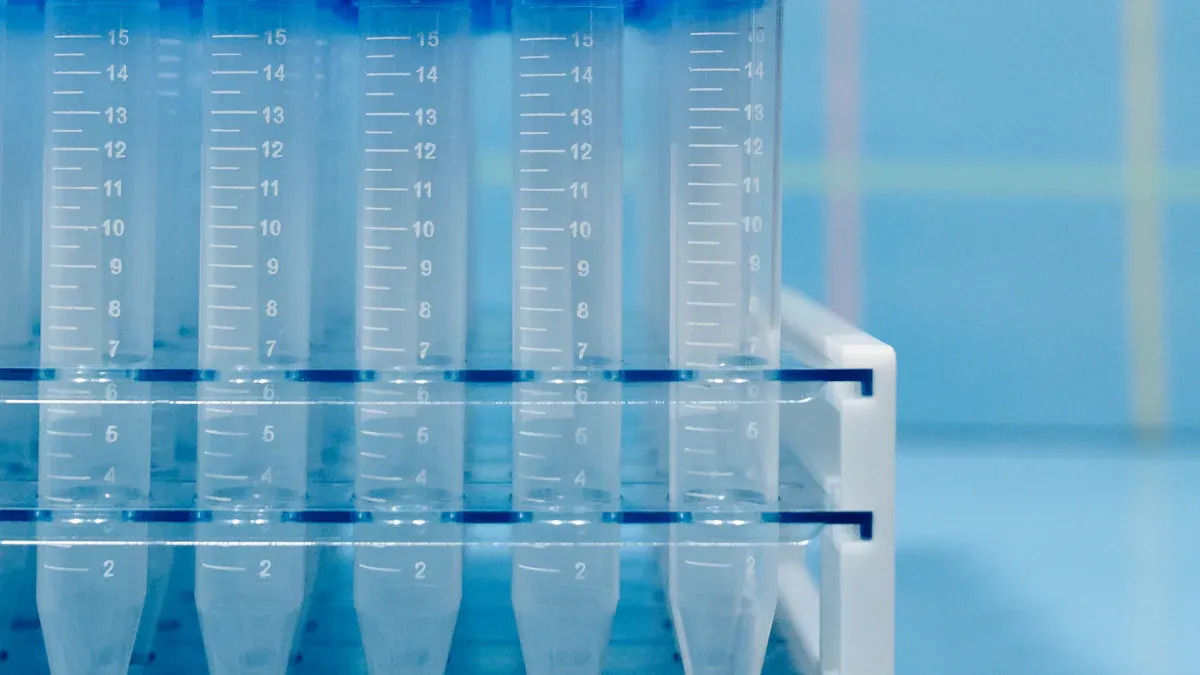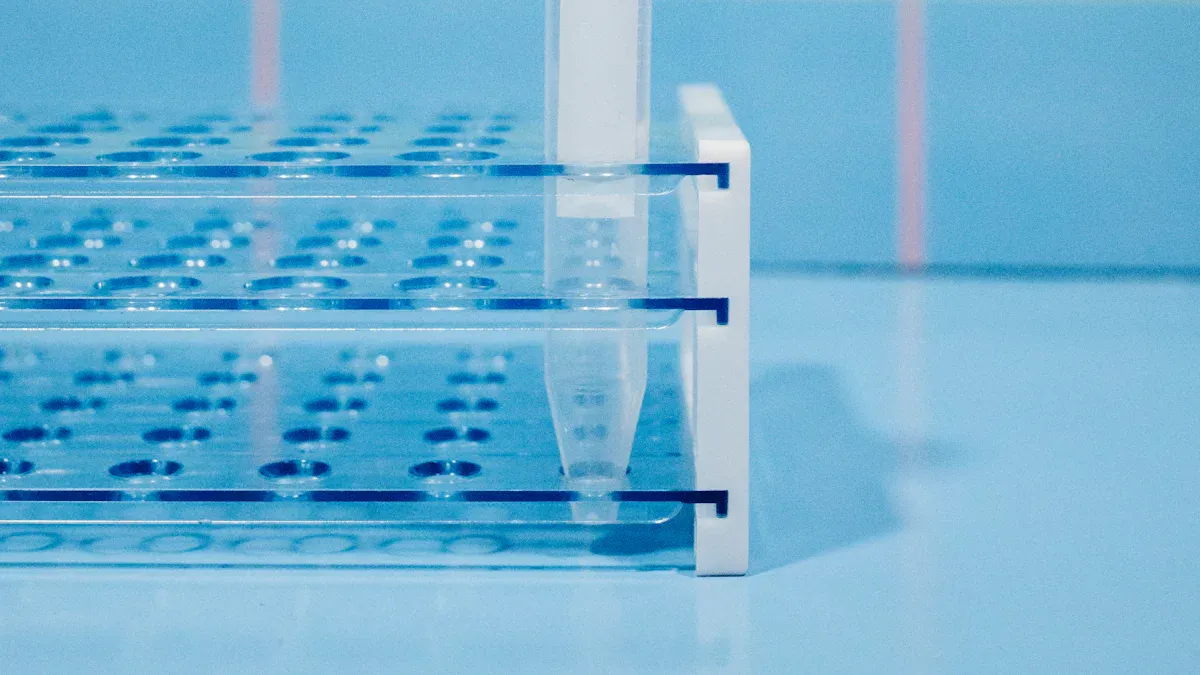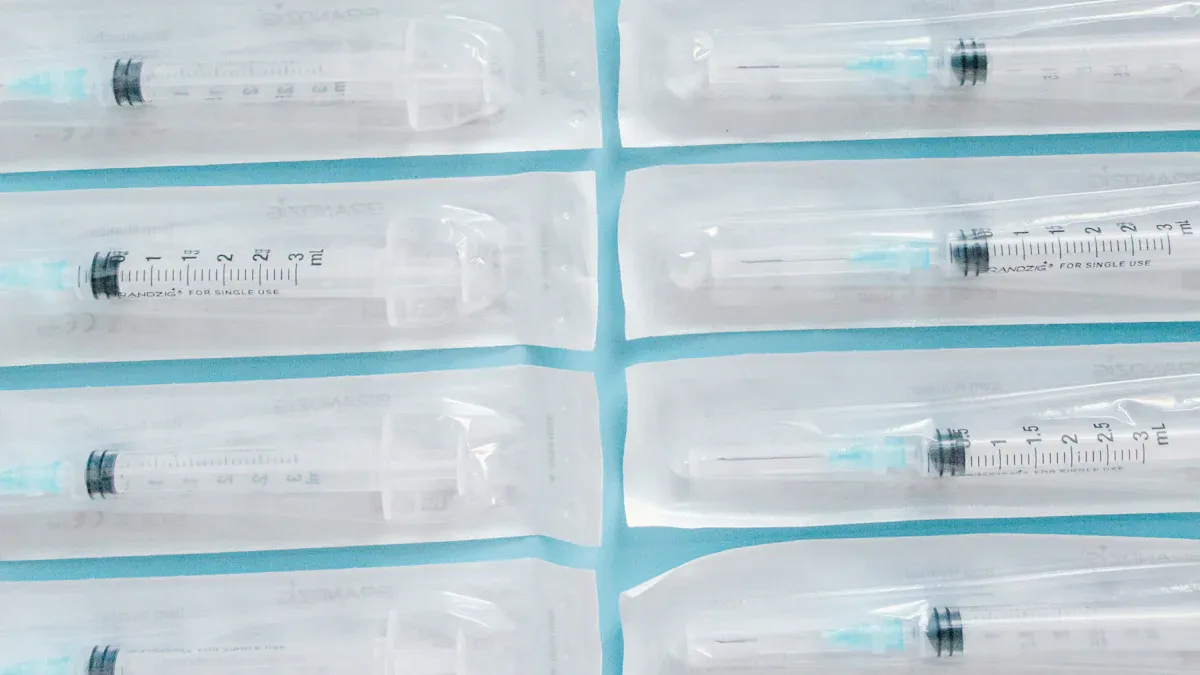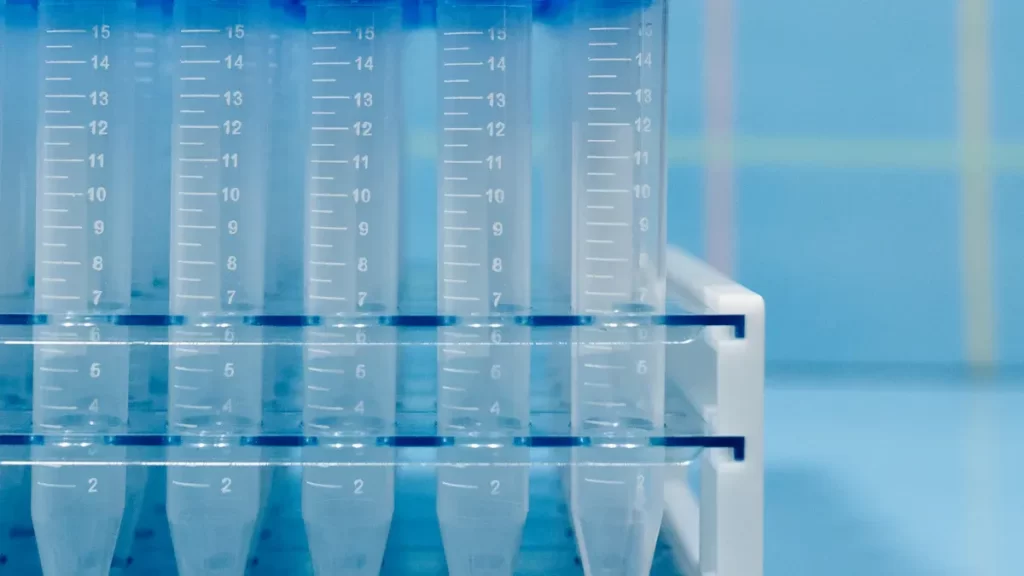News & Events
3 easy Eppendorf tube storage hacks for Western blot

You can use three simple hacks to store your Eppendorf tube during western blot. Try using tube racks, storage boxes, or magnetic and adhesive holders. These tools help you keep your samples organized, easy to reach, and safe from mix-ups. Good storage protects your samples during western blotting and when you place them in the freezer at -80°C. Choose the hack that fits your workflow best.
Key Takeaways
- Use dedicated Eppendorf tube racks to keep samples organized and prevent spills. Choose racks with high-contrast markings for easy identification.
- Implement a color coding system for storage boxes to quickly locate samples. This method reduces mix-ups and saves time during experiments.
- Utilize magnetic and adhesive holders to keep tubes upright and within reach. This setup minimizes the risk of losing samples and keeps your workspace tidy.
- Always label your tubes clearly and match them with your experiment steps. This practice enhances organization and reduces errors during western blotting.
- Avoid repeated freeze-thaw cycles by storing samples at -80°C and only thawing what you need. This helps maintain sample integrity and improves analysis quality.
Eppendorf Tube Racks

Dedicated racks help you organize your Eppendorf tube samples during western blotting. You can keep tubes upright and easy to reach. Racks also protect your samples from spills and mix-ups. You can use racks for short-term storage or when you need to move tubes between steps.
Rack Selection
You should choose a rack that fits your needs. Many racks are made of polypropylene, which gives high stability in freezing applications. Some racks resist temperatures down to -86 °C. You can autoclave these racks at 121 °C for 20 minutes to keep them sterile. Look for racks with high-contrast permanent markings. These markings help you find your samples quickly. Some racks have transparent lids for fast inspection. You can also label the box and lid for extra organization.
Tip: Pick a rack with flexible tube slots. This lets you store different tube sizes for your western blot experiments.
Here is a table showing common features of Eppendorf tube racks:
| Feature | Description |
|---|---|
| Stackable | Saves space when not in use. |
| Non-slip silicone feet | Keeps the rack steady and safe. |
| Wavelike design | Rows at different heights for easy access and identification. |
| Material | Polypropylene for chemical and physical resistance. |
| Numbered positions | Fast orientation and error-free handling. |
| Flexibility | Holds tubes of different sizes. |
Labeling for Western Blot
Labeling helps you avoid mistakes. Use high-contrast alphanumeric markings on your rack. You can also write on the box or lid. Numbered positions make it easy to match tubes with your sample list. This system supports fast orientation and reduces errors during blotting.
- Write clear labels on each tube.
- Match tube numbers with your experiment steps.
- Use permanent markers for long-lasting labels.
Tube Arrangement
Arrange your Eppendorf tube samples in order of use. Place tubes for each step of western blotting in separate rows. Stackable racks save space when you need to store many tubes. Non-slip feet keep racks steady, so tubes do not tip over. Wavelike designs let you see and grab tubes quickly. Autoclavable racks keep your workspace safe and clean.
Here is a table with best practices for tube arrangement:
| Feature | Description |
|---|---|
| Stackable | Saves space when not in use. |
| Non-slip silicone feet | Prevents spills and keeps tubes upright. |
| Wavelike design | Easy access and identification of reaction vessels. |
| Numbered tube positions | Fast orientation and error-free handling. |
| Autoclavable (121°C, 20 min) | Ensures sterility and safety in laboratory settings. |
You can use racks for short- to mid-term storage and for moving tubes between workstations. This keeps your western blotting workflow smooth and organized.
Storage Boxes for Western Blot

Storage boxes help you keep your samples safe and easy to find during western blotting. You can use color coding and numbering to organize your Eppendorf tubes. These methods help you avoid mix-ups and save time when you need to find a sample fast.
Color Coding
Color coding makes it simple to sort your samples. You can use different colored boxes or lids for each step of the blotting process. For example, use blue for primary antibody samples and red for secondary antibody samples. This system helps you spot the right box at a glance. Many labs use colored stickers or tape for extra clarity.
Tip: Keep a chart near your freezer that shows what each color means. This helps everyone in the lab follow the same system.
Numbering System
A numbering system gives each Eppendorf tube a clear spot in the storage box. You can use boxes with alphanumeric codes printed on the lid and base. Write the number on your sample list and on the tube. This way, you always know where each sample sits. Numbered boxes help you track samples during western blotting and prevent mistakes.
Here is a table showing a common storage box for Eppendorf tubes:
| Storage Box Type | Capacity | Tube Size | Material | Temperature Range | Features |
|---|---|---|---|---|---|
| Storage Box 5×5 | 25 tubes | 5 mL | Polypropylene | -86°C | Autoclavable, with lid and alphanumeric code |
ULT Freezer Compatibility
You need storage boxes that work in ultra-low temperature (ULT) freezers for long-term sample safety. Polypropylene boxes can handle temperatures down to -86°C. These boxes keep your Eppendorf tubes safe during long storage. You can autoclave them to keep everything sterile. Always check that your storage box fits your freezer racks and holds the right tube size for your western blot samples.
Note: Using the right storage box protects your samples from damage during freezing and thawing. This keeps your western blotting results reliable.
Magnetic and Adhesive Holders
Magnetic and adhesive holders give you a smart way to keep your Eppendorf tube samples upright and close during blotting. You can place these holders right next to your workspace. This makes it easy to grab a tube when you need it. You do not have to worry about tubes rolling away or getting lost during a busy blot.
Workspace Placement
You can attach magnetic holders to metal surfaces like lab benches or fume hoods. Adhesive holders stick to smooth surfaces, such as glass or plastic. This lets you set up your tubes exactly where you want them. You can keep your samples at eye level or within arm’s reach. This setup helps you move quickly through each step of blotting. You do not waste time searching for the right tube.
Here is a table showing some common magnetic holders for Eppendorf tube storage in blotting workflows:
| Device Name | Compatibility | Description |
|---|---|---|
| XBASE24 | ANSI-SLAS footprint 24 well plates | Dual offset plate positioning for low-loss washing and high concentration elution. |
| Magnetic Purification Starter Kit | Large volume magnetic particle workflows | Includes XBASE24 magnetic array plate for rapid 24 well magnetic processes. |
| Conical Tube Magnet | 5mL microcentrifuge tubes | Holds two tubes, adjustable for ergonomic use inside a fume hood or biological safety cabinet. |
| Conical Tube Magnet | 15mL conical centrifuge tubes | Holds two 15mL tubes, designed for manual magnetic processes. |
Spill Prevention
You can prevent spills by using holders that grip your tubes tightly. Magnetic and adhesive holders keep your tubes upright, even if you bump the bench. This reduces the risk of losing valuable samples during blotting. You do not have to worry about tubes tipping over or leaking. Your workspace stays clean and safe.
Tip: Always check that your holder fits the size of your Eppendorf tube. A snug fit gives the best spill protection.
Bench Space Saving
You can save bench space by using holders that attach to vertical surfaces. Magnetic holders let you use the sides of metal cabinets or shelves. Adhesive holders stick to the wall or the side of your equipment. This clears up your main work area for other blot tasks. You can keep your workspace tidy and organized. A neat bench helps you focus on your blotting steps and reduces mistakes.
Magnetic and adhesive holders make your Western blotting workflow smoother. You keep your Eppendorf tube samples safe, easy to reach, and ready for every step of the blot.
Quick Tips for Single-Cell Western Blotting
Single-cell western blotting requires careful handling of your samples. You want to keep your results accurate and your workflow smooth. Here are some quick tips to help you protect your samples and get the best results from your single-cell analysis.
Freeze-Thaw Avoidance
You should avoid repeated freeze-thaw cycles during single-cell western blotting. Each time you freeze and thaw your samples, you risk damaging proteins. This can lower the quality of your single-cell analysis. Store your samples at -80°C until you need them. If you must thaw a sample, use it right away. Try to split your samples into small aliquots before freezing. This way, you only thaw what you need for each blotting run.
Tube Capping
Always keep your Eppendorf tubes capped during single-cell western blotting. Open tubes can let in dust or other contaminants. This can affect your single-cell analysis and lead to unreliable results. A closed tube also prevents evaporation, which keeps your sample volume steady. Make it a habit to cap each tube as soon as you finish using it. This simple step helps you maintain sample integrity for all your single-cell proteomic assays.
Gel Bubble Removal
Bubbles in your polyacrylamide gel can cause problems during single-cell western blotting. You want a smooth gel for clear results. Many researchers use a 15 mL Eppendorf tube to gently roll over the gel surface. This helps push out air bubbles before the gel sets. You can also add a small amount of isopropanol to the polyacrylamide gel solution. Isopropanol helps remove bubbles and creates a flat gel surface. Be careful when rolling the tube so you do not damage the gel. A bubble-free gel gives you better bands and more reliable single-cell analysis.
Tip: Always check your polyacrylamide gel for bubbles before starting your western blot. A clear gel leads to better results in single-cell western blotting.
You can improve your Western blot workflow by using tube racks, storage boxes, and magnetic or adhesive holders. These hacks help you keep samples organized and safe during blotting. Proper storage protects your results and saves time. Try these tips in your lab to reduce errors and make every blot more reliable.
Good organization leads to better science. Start with your Eppendorf tube storage.
FAQ
How do you prevent Eppendorf tube labels from fading in the freezer?
Use waterproof, laboratory-grade labels and permanent markers. Place clear tape over handwritten labels for extra protection. This method keeps your labels readable, even at -80°C.
Can you reuse Eppendorf tubes after Western blotting?
You should not reuse Eppendorf tubes for critical experiments. Residual proteins or chemicals can contaminate new samples. Always use fresh tubes for best results.
What is the best way to organize tubes for multiple Western blot steps?
Arrange tubes in racks or boxes by step order. Use color coding or numbering. Keep a written chart nearby. This system helps you find each sample quickly and reduces mistakes.
Do magnetic holders work with all Eppendorf tube sizes?
Most magnetic holders fit standard 1.5 mL and 2.0 mL tubes. Check the product details before buying. Some holders also fit 5 mL or 15 mL tubes.
How do you avoid sample loss during tube storage?
Always cap tubes tightly. Store them upright in racks or boxes. Avoid overfilling. Use holders to prevent tipping. This practice keeps your samples safe and prevents spills.

